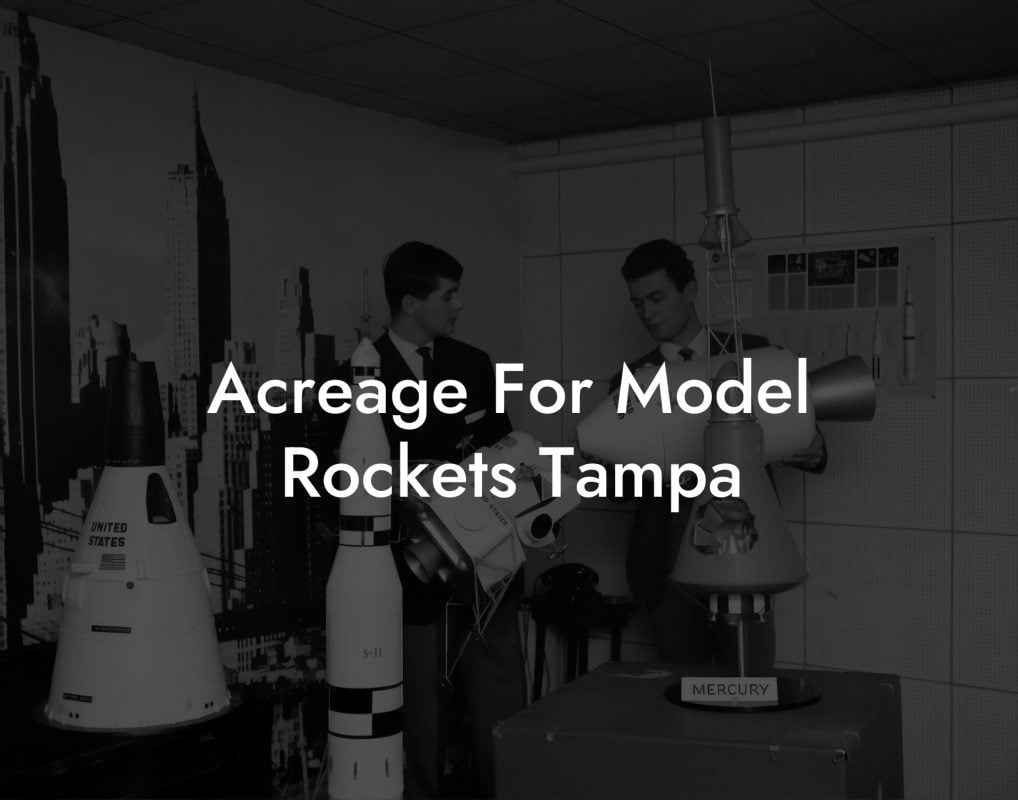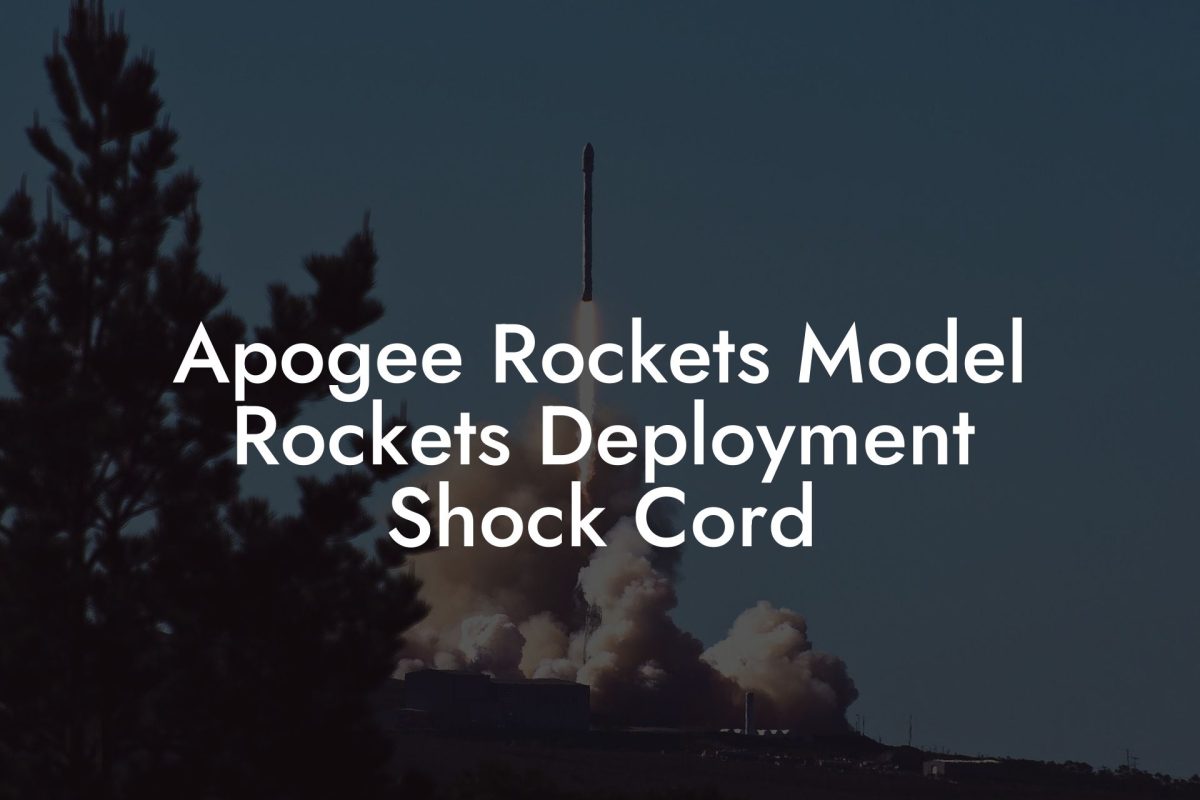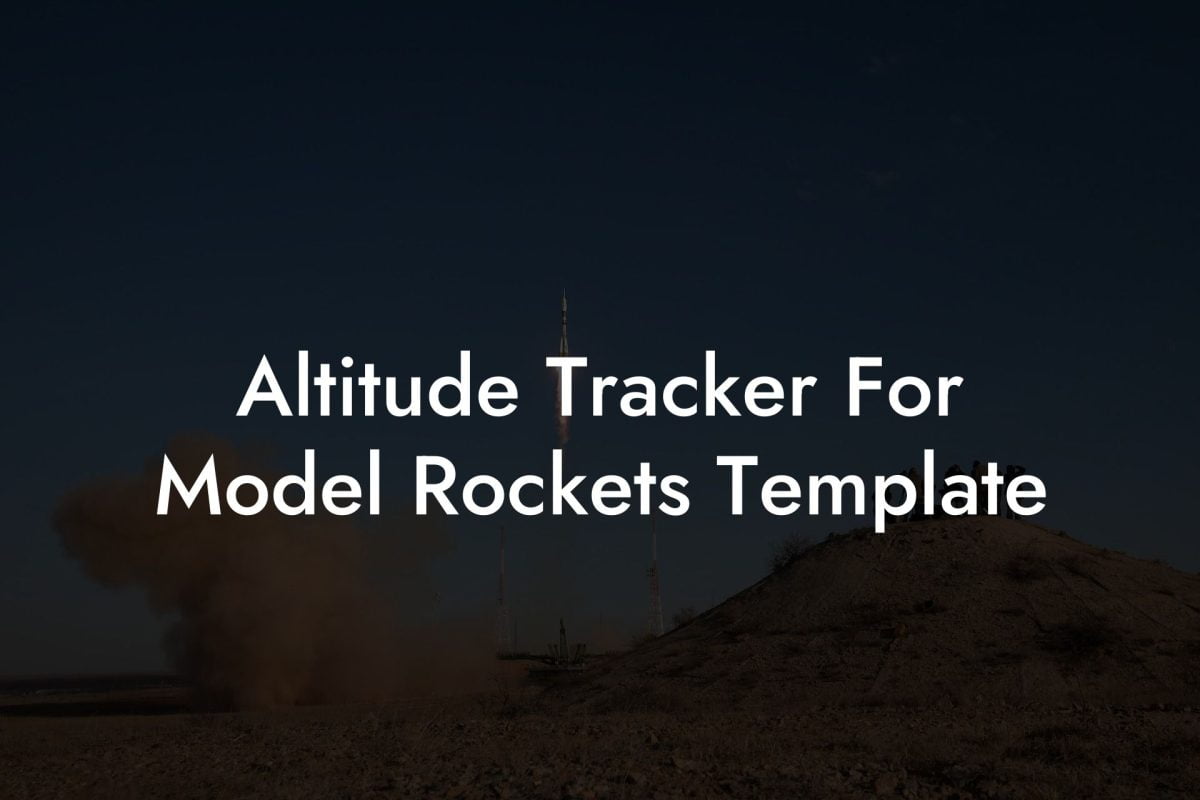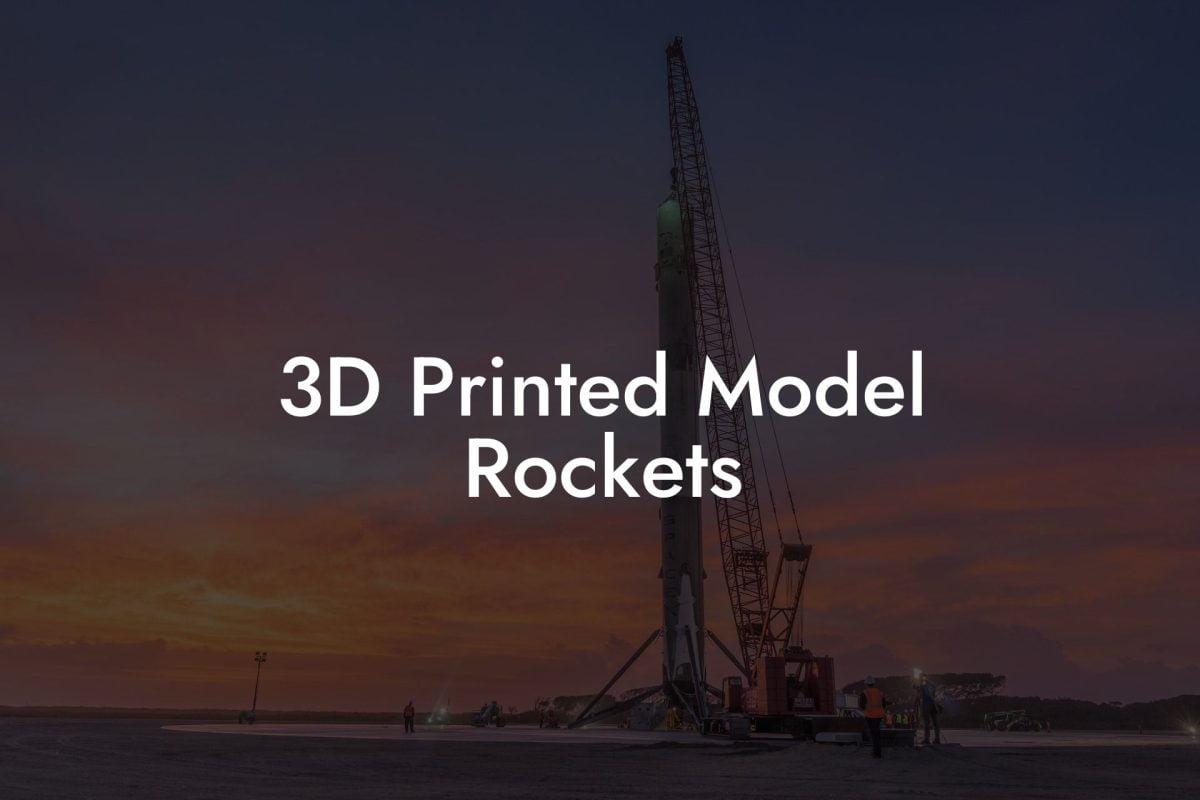Imagine soaring to new heights with a very large model rocket that defies gravity and pushes the limits of innovation. Welcome to the world of extreme model rocketry, where creativity meets cutting-edge technology and the thrill of adventure knows no bounds. Whether you're a seasoned enthusiast or a curious newcomer, this comprehensive guide will blast off into the stratosphere of very large model rockets, exploring the latest trends, techniques, and technologies that will take your hobby to new extremes.
Quick Links to Useful Sections
- What Are Very Large Model Rockets?
- The Anatomy of a Very Large model rocket
- Designing and Building a Very Large Model Rocket
- Materials and Fabrication
- Aerodynamics and Wind Tunnel Testing
- Electronic Systems and Avionics
- Testing and Iteration
- Very Large Model Rocketry Communities and Resources
- Safety Considerations and Best Practices
- Frequently Asked Questions about Very Large Model Rockets
- Your Journey to Very Large Model Rocketry
What Are Very Large Model Rockets?
Very large model rockets are the ultimate expression of creativity and innovation in the world of model rocketry. These behemoths of the skies can reach heights of over 10,000 feet, with some models boasting wingspans of up to 10 feet or more. They require meticulous design, precision engineering, and a deep understanding of aerodynamics, materials science, and electronics.
Unlike their smaller counterparts, very large model rockets demand a unique set of skills, tools, and resources. They push the boundaries of what's possible with model rocketry, challenging enthusiasts to think outside the box and push the limits of their imagination.
The Anatomy of a Very Large model rocket
A very large model rocket is a complex system comprising multiple components, each playing a critical role in its successful flight and recovery. Let's dissect the anatomy of these marvels:
- Fuselage: The main body of the rocket, designed to withstand intense aerodynamic forces and protect the payload.
- Wings and Fins: Crucial for stability and control during ascent and descent.
- Recovery System: A sophisticated network of parachutes, drogues, and electronic systems ensuring a safe and controlled landing.
- Propulsion System: High-powered motors and advanced fuel systems that generate the thrust needed to reach extreme altitudes.
- Avionics and Electronics: Sophisticated systems for navigation, communication, and data acquisition.
Each component must be carefully designed, tested, and integrated to ensure a successful flight.
Looking For The Best Model Rocket Kits? You'll Love These:
Designing and Building a Very Large Model Rocket
Crafting a very large model rocket is an intricate process that requires patience, skill, and attention to detail. Here are some essential considerations:
Materials and Fabrication
Selecting the right materials is critical. Fiberglass, carbon fiber, and advanced composites are often used for their strength, durability, and lightweight properties.
Aerodynamics and Wind Tunnel Testing
Understanding aerodynamics is vital for a successful flight. Wind tunnel testing and simulation software help refine designs and optimize performance.
Electronic Systems and Avionics
Sophisticated electronic systems are necessary for navigation, communication, and data acquisition. Choose components carefully, ensuring compatibility and reliability.
Testing and Iteration
Rigorous testing and iteration are essential for refining designs, identifying weaknesses, and ensuring a successful flight.
Very Large Model Rocketry Communities and Resources
The very large model rocketry community is vibrant and active, with numerous online forums, social media groups, and local clubs. These resources provide valuable knowledge, support, and inspiration:
- Online Forums: Websites like Rocketry Forum, The Rocketry Wiki, and Reddit's r/modelrockets offer a wealth of information and expertise.
- Social Media Groups: Join Facebook groups, Instagram communities, and Twitter discussions dedicated to very large model rockets.
- Local Clubs and Meetups: Connect with like-minded enthusiasts in your area, sharing knowledge and experiences.
- Competitions and Events: Participate in national and international competitions, such as the International Rocketry Competition, to showcase your skills and learn from others.
These resources will help you stay up-to-date with the latest trends, techniques, and technologies in very large model rocketry.
Safety Considerations and Best Practices
Safety is paramount in very large model rocketry. Always follow best practices and guidelines to ensure a safe and successful flight:
- launch Site Selection: Choose a safe, open area with minimal obstacles and no overhead wires.
- Weather Conditions: Monitor weather forecasts and avoid launching in strong winds, thunderstorms, or low visibility.
- Rocket Design and Construction: Ensure your rocket is designed and built with safety in mind, using reliable materials and components.
- Launch and Recovery Procedures: Develop a detailed plan for launch and recovery, including contingency strategies for unexpected events.
Remember, safety is a shared responsibility among all participants. Always prioritize caution and follow established guidelines.
Frequently Asked Questions about Very Large Model Rockets
Here are some frequently asked questions about very large model rockets:
1. What is the largest model rocket ever built?
The largest model rocket ever built is the "Darkstar," standing at an impressive 36 feet tall and weighing over 1,000 pounds.
2. How high can very large model rockets fly?
Very large model rockets can reach altitudes of over 10,000 feet, with some models reaching as high as 30,000 feet or more.
3. What is the most challenging part of building a very large model rocket?
The most challenging part is often the design and construction of the fuselage, which requires advanced materials and fabrication techniques.
4. Can I build a very large model rocket as a beginner?
While it's possible, it's recommended that beginners start with smaller models and work their way up to more complex projects.
Your Journey to Very Large Model Rocketry
Embarking on a journey to build and launch a very large model rocket is a thrilling adventure that requires dedication, perseverance, and creativity. With this comprehensive guide, you're well on your way to joining the ranks of extreme model rocket enthusiasts.
Remember to stay curious, keep learning, and always push the boundaries of what's possible. The world of very large model rockets is full of endless possibilities, and with the right mindset and resources, you can achieve greatness.
So, what are you waiting for? Blast off into the stratosphere of very large model rockets and discover a world of excitement, innovation, and limitless possibilities.
Looking For The Best Model Rocket Kits? You'll Love These:
Useful Interruption: Dive deeper into the world of Model Rockets with our most popular sections. If there is anything you think is missing or anything you would love for us to write about, just give us a shout.
- Getting Started & Basics With Model Rockets
- Model Rocket Design, Build & Customization
- Model Rocket Propulsion & Engine Technology
- Model Rocket Launch Techniques & Recovery
- Model Rocket Advanced Rocketry & Innovations
- Model Rocket DIY and Customization
- Model Rocket Equipment Reviews & Digital Tools
- Community, Competitions & Education
- Model Rocket Troubleshooting & FAQs
- Model Rocket Bonus/Seasonal & Niche Topics
A group of model rocket enthusiasts gathered at a field for their weekly launch event. Among them was Dave, a seasoned builder known for pushing the limits of hobby rocketry. This time, he had outdone himself.
“Ladies and gentlemen,” Dave announced, dramatically pulling a cloth off his latest creation, “I present to you: The Kraken!”
The crowd gasped. This wasn’t just a model rocket, it was a monster. The thing stood 8 feet tall, had six clustered engines, and was covered in enough duct tape to qualify as a classified aerospace project.
“Dave,” muttered Steve, the cautious safety officer, “Have you, uh… done the math on this?”
“Math?” Dave scoffed. “I built it in my garage at 3 a.m. with parts from eBay. This is an art piece, Steve.”
The countdown began.
5…
4…
3…
2…
1…
The engines ignited with a BOOM, and The Kraken shot up… kind of. It immediately did a violent barrel roll, narrowly missing the spectators before skyrocketing at an angle that could only be described as “legally questionable.”
The crowd collectively ducked as The Kraken flew straight over the adjacent cornfield, where Old Man Jenkins, the grumpiest farmer in town, was minding his business.
KABOOM!
The rocket disappeared behind the barn. A moment later, a flaming piece of Estes igniter wire landed at Steve’s feet. The silence was deafening.
And then, an unmistakable sound echoed across the field.
Jenkins’ shotgun being cocked.
“DAVE!!!” Steve shouted. “RUN.”
And that was the day Dave invented the first-ever biologically powered rocket booster: pure adrenaline.
To this day, nobody knows where The Kraken landed, but legend has it, it still haunts the skies, terrifying unsuspecting drones and low-flying birds.















